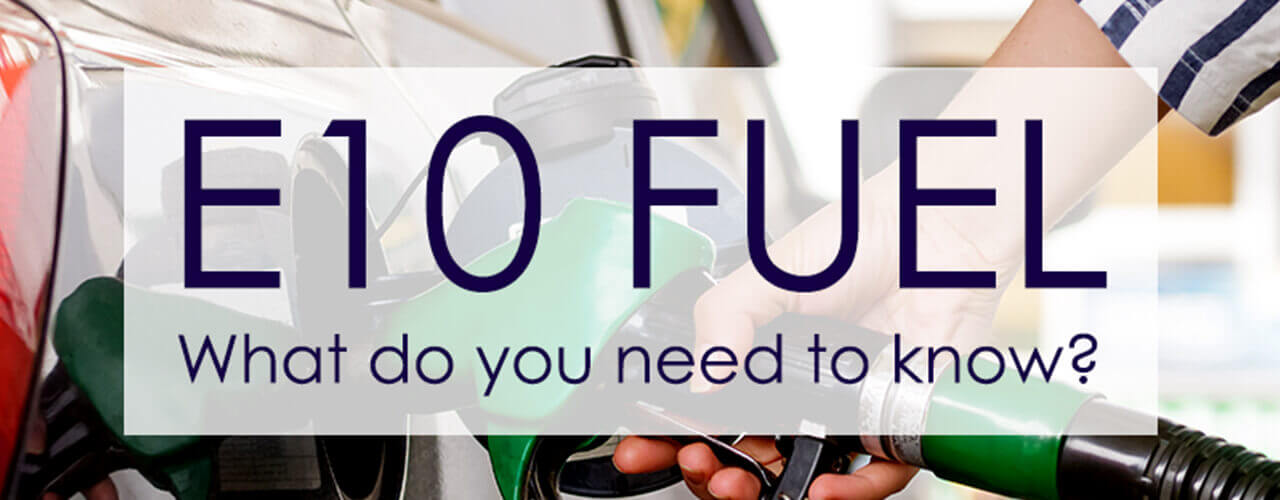Everything you need to know about E10 fuel
Helping answer your customers' questions on E10 fuel
By now, most motorists should be aware of the introduction of E10 fuel. However, they may not know all the details, and they may be concerned over whether they can use this new fuel in their car or motorcycle, especially if they own an older model. Here, we tell you all you need to know about E10 to help you answer your customers' questions.
What is E10?
It’s a new regular grade petrol that contains less carbon and more ethanol. The E stands for ethanol, and the number 10 denotes that the fuel contains up to 10% renewable ethanol, up from 5% in the previously widely used regular grade E5 fuel.
What’s the point of it?
Using the new fuel cuts CO2 emissions and is intended to help the UK on its journey to reaching net-zero emissions, which the government wants to achieve by 2050. The government believes that using E10 could prevent 750,000 tonnes of CO2 emissions from being released into the atmosphere each year, equivalent to taking 350,000 cars off the road.
How does that work?
Petrol is a fossil fuel, and burning it releases CO2, often called a 'greenhouse gas', into the atmosphere that would otherwise have remained trapped within the earth or beneath the sea. Ethanol, a clear, colourless alcohol, is known as a 'biomass fuel’ and is fermented from organic materials containing starch, such as corn, wheat, barley, potatoes, and sugar cane. Ethanol creates CO2 when burnt in an engine. But this is offset by the CO2 the plants used to make the fuel absorbed when they were growing. Distillers’ grains, a by-product of Ethanol production, can be used to supplement livestock feed.
Is diesel changing too?
No, there is no change to diesel fuel.
Can my car run on E10?
Since 2011, manufacturers have designed all new petrol cars and motorbikes to run on E10. Most cars and motorbikes manufactured since the late 1990s can also use the new fuel. However, some models from the early 2000s are not compatible. You can use the government E10 vehicle check website to clarify if your car is eligible.
What can I do if my car can’t run on E10?
You can still use E5 petrol in ‘super’ grade 97+ octane fuel, also labelled as E5.
Will E10 alter my car’s fuel economy?
There may be a very slight reduction in the number of miles you get from each tank of fuel, but we are only talking about a decline of around one per cent, so it is not something you are likely to notice in everyday driving. Other factors, such as revving the engine high before changing gear, driving with under-inflated tyres, carrying a roof rack or towing a trailer, have a much more adverse effect on fuel economy.
What if I fill up my older or classic car with E10 by mistake?
Don't worry. A one-off fill of E10 will not cause any damage. The best thing to do is to start diluting the E10 fuel with E5 Super fuel as soon as your car's tank drops to three-quarters full, and then make sure you use E5 in super. There is certainly no need to drain the tank, as you would have to if you filled up a petrol car with diesel or vice versa. However, an older car should not be left sitting with E10 fuel in the tank for an extended period, as the higher ethanol content could cause damage to components such as rubber seals.
Will using E10 change my car’s eligibility to drive into a clean air zone (CAZ), low emission zone (LEZ) or ultra-low emission (ULEZ) without paying?
No, using E10 will not alter your car’s Euro emissions standard. If you had to pay a tariff previously, you will still have to do so when using E10.
What about things like mopeds, boat engines and lawnmowers?
Always check the handbook or with the manufacturer. If you are unsure, it is best to use E5 Super, especially if your machine has an engine of 50cc size or less.




